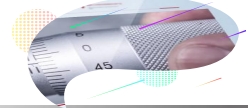Metal Injection Molding (MIM) technology, as an advanced manufacturing process, not only enables the production of complex parts but also helps reduce costs for businesses. This article will explore the relationship between MIM and cost reduction design, and introduce how to utilize MIM technology to lower production costs.
So, what is the relationship between MIM and cost reduction design? How can MIM be used to reduce costs?
This article will start from the process characteristics of MIM itself, and introduce three ways to reduce costs using MIM:
By leveraging the ability of MIM to mold complex three-dimensional shapes, multiple parts originally formed by sheet metal stamping, powder metallurgy, or machining can be consolidated into a single component. This simplifies product design, reduces the number of components, and lowers product assembly costs and inventory costs, among other benefits.
By utilizing the near-net shaping capabilities of MIM, it replaces processes such as machining that involve significant material wastage and high machining costs.
By harnessing the high dimensional accuracy and excellent surface quality of MIM molding, it replaces processes like die casting that require secondary machining to improve dimensional accuracy or surface quality.
Approach 1: Consolidating Multiple Components Using MIM
Compared to processes such as sheet metal stamping, machining, die casting, and powder metallurgy, MIM can mold parts with complex three-dimensional shapes. These parts can feature external grooves, external threads, tapered outer surfaces, intersecting through-holes, blind holes, recesses, keys, ribs, and surface knurling, among other characteristics.
Therefore, multiple components originally formed by processes such as sheet metal stamping, machining, die casting, and powder metallurgy can be molded into a single part using MIM. This simplifies the product structure, eliminates product assembly processes, and ultimately reduces product costs.
Case 1: Four parts processed through machining, sheet metal stamping, and other techniques are consolidated into one MIM part.


Case 2: Five parts are consolidated into one MIM component.

Case 3: As shown in the figure, a camera mounting bracket used in the medical field, which has a complex three-dimensional structure. Originally, it was assembled from two machined parts by welding. Now, it is merged into one component through MIM, reducing costs and avoiding potential quality issues caused by sharp burrs at the original welding joints.

Approach 2: Using MIM to Reduce Material Waste
MIM is a near-net shaping process. Leveraging the near-net shaping capabilities and minimal material wastage of MIM, it can replace processes like machining to reduce material waste and lower costs. This is particularly crucial for expensive metals. Near-net shaping refers to the final shape of the part being very close to its initial form; in other words, it means high material utilization and minimal material wastage. MIM, die casting, injection molding, and 3D printing are all near-net shaping processes. Machining, on the other hand, is not a near-net shaping process and often incurs significant material wastage.
Replacing machining with MIM can reduce material usage from 135g to 35g, thus lowering product costs.

Approach 3: Using MIM to Reduce or Even Avoid Secondary Machining
Compared to die casting or other casting processes, MIM offers higher dimensional accuracy and surface quality. While meeting the same dimensional accuracy and surface quality requirements, MIM can achieve them with one-time molding or minimal secondary machining, whereas die casting or other casting processes may require multiple machining operations.
Case 1: The fixed brackets on the left and right sides of ski boots, originally formed by casting processes, require multiple machining operations to achieve the desired structure and dimensional accuracy.

Now, with the MIM process, the required dimensional accuracy can be achieved in one molding operation, avoiding machining and thus reducing costs.
Case 2: The brackets and ramps in door hinges, originally produced through die casting, required numerous machining operations to achieve the required dimensional accuracy. Now, using MIM, the required dimensional accuracy can be achieved in one molding operation.

Conclusion
MIM is a relatively new technology, and for many industries, especially traditional ones, MIM may not be well-known. Therefore, there is great potential and opportunity for MIM applications. With guidance from cost reduction design principles, we can fully utilize MIM to consolidate components, replace current machining or die casting processes, and achieve cost reduction for products. (Note: This applies to only a small portion of products, not all products.)
Choose a professional MIM supplier
We have the capability for independent material feedstock development, allowing us to customize and optimize alloy formulations according to customer requirements
With nearly 20 years of production experience, we have continuously refined our process and improved production efficiency, ensuring product quality and timely delivery.
Our dedicated team of engineers, technicians, and quality control experts provides comprehensive technical support and service to our customers, ensuring smooth production processes and meeting customer needs.
To learn more about MIM technology and our manufacturing services, please don’t hesitate to contact us. Whether you need customized parts, technical consultation, or a quotation, our professional team is ready to support you. Reach out to us today to discuss your project requirements and find the best solution together.


